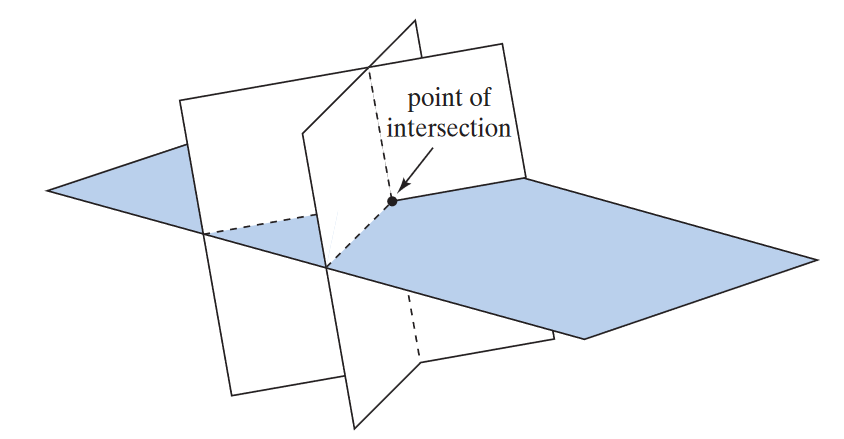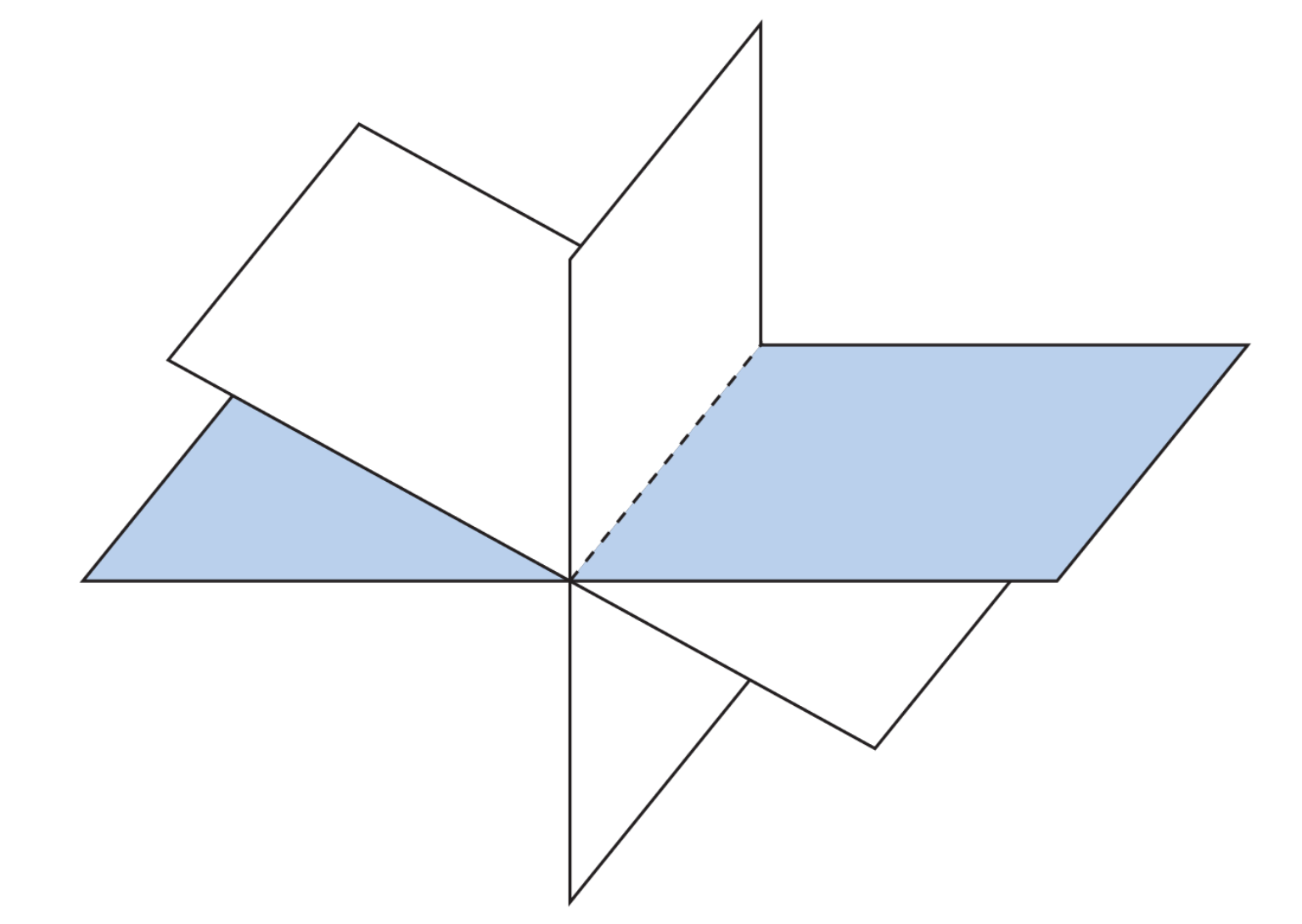A linear equation is an equation of the form:
We often examine systems of linear equations, where we have multiple linear equations and are asked to determine whether there is a corresponding solution. To do this, we use row reduction or Cramer’s rule.
Systems of equations can be encoded in matrices:
We can only interpret our results geometrically in or under, but the general idea is similar as we extend past three dimensions. Our results vary between a unique solution, infinitely many solutions, and no solution at all, in the respective images below.1 In other words, we determine the nature of the intersection of the lines, planes, or higher-dimensional objects by solving these systems.


 We refer to systems with no solutions as inconsistent.
We refer to systems with no solutions as inconsistent.
See also
Footnotes
-
From Linear Algebra with Applications, by Otto Bretscher. ↩